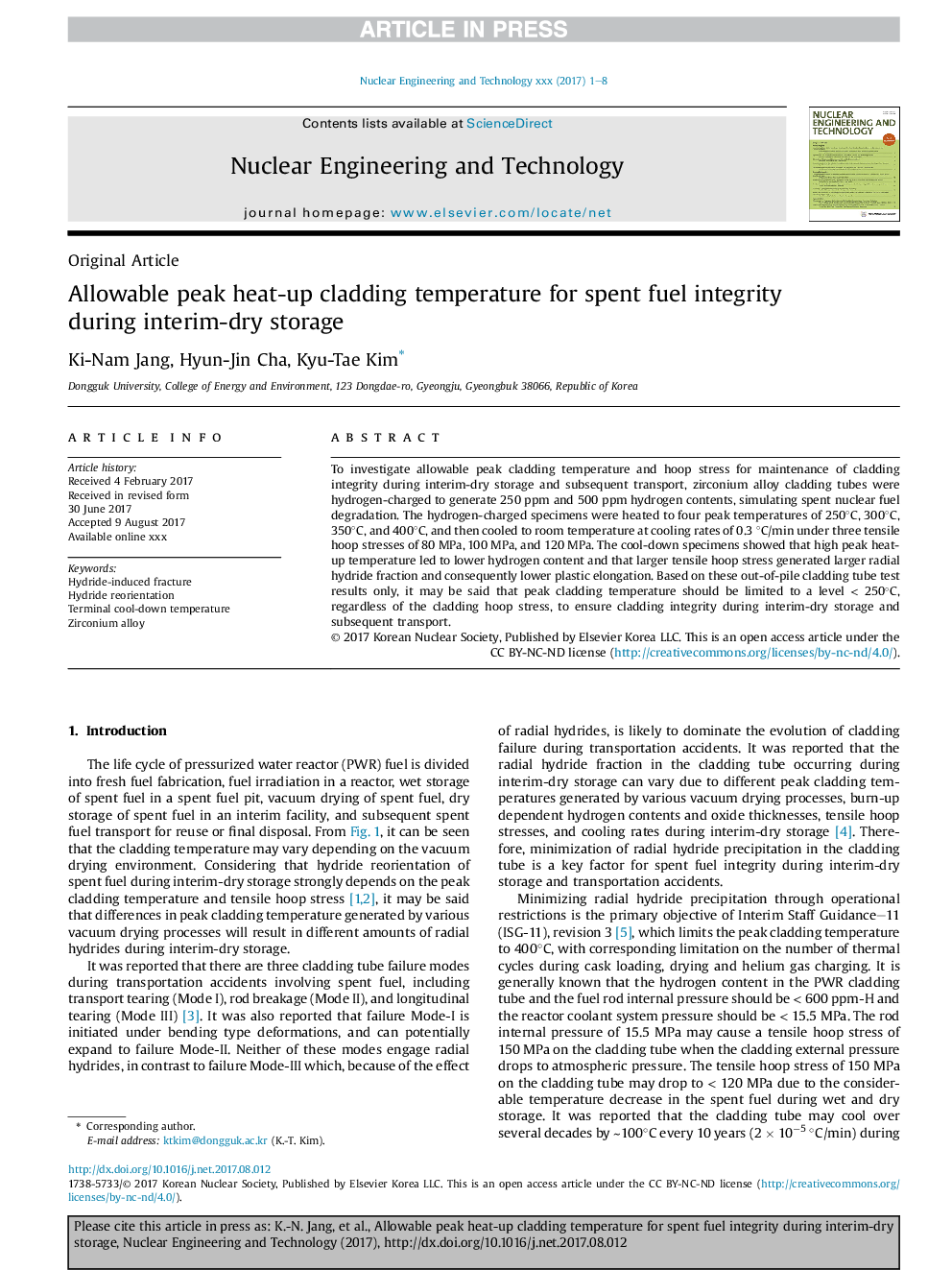| Article ID | Journal | Published Year | Pages | File Type |
|---|---|---|---|---|
| 8083958 | Nuclear Engineering and Technology | 2017 | 8 Pages |
Abstract
To investigate allowable peak cladding temperature and hoop stress for maintenance of cladding integrity during interim-dry storage and subsequent transport, zirconium alloy cladding tubes were hydrogen-charged to generate 250 ppm and 500 ppm hydrogen contents, simulating spent nuclear fuel degradation. The hydrogen-charged specimens were heated to four peak temperatures of 250°C, 300°C, 350°C, and 400°C, and then cooled to room temperature at cooling rates of 0.3 °C/min under three tensile hoop stresses of 80 MPa, 100 MPa, and 120 MPa. The cool-down specimens showed that high peak heat-up temperature led to lower hydrogen content and that larger tensile hoop stress generated larger radial hydride fraction and consequently lower plastic elongation. Based on these out-of-pile cladding tube test results only, it may be said that peak cladding temperature should be limited to a level < 250°C, regardless of the cladding hoop stress, to ensure cladding integrity during interim-dry storage and subsequent transport.
Keywords
Related Topics
Physical Sciences and Engineering
Energy
Nuclear Energy and Engineering
Authors
Ki-Nam Jang, Hyun-Jin Cha, Kyu-Tae Kim,
